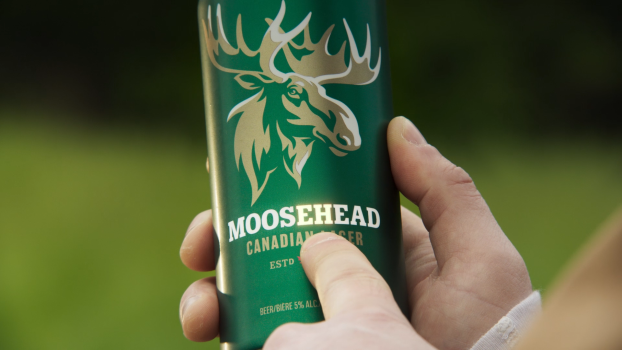Also in this report:
– The Golden Age of TV – Part II: The specialty channels are revisiting the idea of linking content to sponsors’ names and objectives, just like in the ’50s p.20
– Buyers approaching Quebec specialties with caution p.24
– Addendum to Fall TV Preview p.27
For the second time in three years, Canadians can look forward to a fall tv season that promises significantly enhanced choice, in the form of four new English-language specialty channels.
Teletoon, History Television, The Comedy Network and CTV News 1 all of them hope to tap the growing appetite out there for the kind of high-quality, highly-targeted programming that conventional broadcasters, in their quest for broad appeal, just can’t deliver.
The new channels are also determined to avoid the problems that plagued the specialty class of 1995 namely vague branding, a too-short introductory period and, of course, the whole negative-option billing fiasco. This time, they say, consumers will have clear choices and ample time to make them.
Start with the names. Rather than ambiguous monikers like Life, Showcase and Bravo!, the new channels have adopted labels that speak directly to their content: comedy, history, cartoons, news. Since the amount of attention viewers will devote to a channel is inversely proportional to the number of channels they have to choose from, clear branding is now more crucial than ever.
CTV News 1 will enter the market as an add-on to the basic subscriber package. The other three will be offered by the cable companies as a single tier of services. That means marketers at the new comedy, history and animation services will have to work together to convince viewers to buy something they’ve never seen before. Rather than compete against one another for a share of existing viewership, they must launch complimentary promotional efforts, with the overall goal of increasing the average amount of tv Canadians watch each day.
With their September 8 launch date looming, Canada’s four new specialty channels are working to sell both viewers and advertisers on their virtues. Here’s how they plan to do it.
CTV News 1
Compared to the other new specialty channels, CTV News 1 has it easy.
‘I’m not sure there’s a case history you could cite of a product [like the new tier of services] that has had to go out and get so many people to physically place an order, in such a short period of time,’ says Kathie Shearer, group vice-president of marketing and sales for CTV Television Network. ‘It’s a very interesting challenge.’
Shearer can take an academic view of this challenge because it’s one that ctv’s new headline news service won’t have to face. Unlike Teletoon, History Television and The Comedy Network, News 1 will be an add-on to the basic analogue subscriber package, so it can be positioned as an added value to tv viewers, rather than an added cost.
That allows the network to focus on essentials like awareness-building a fairly straightforward proposition, given ctv’s brand equity and the fact that its evening national newscast is the ratings leader.
‘We’re lucky because News 1 is kind of a younger brother to CTV News, so people are already familiar with it,’ says Shearer. ‘It’s growing out of something that’s quite comfortable to advertisers.’ The response, she adds, has been quite positive so far, especially from the financial and automotive sectors.
Billboards and commercial breaks on the new channel will be scheduled to allow sponsorship of specific news segments, allowing advertisers to get close to reports related to their specific sectors: sports, health, computers, and so on.
News 1 is also tapping into an established viewing trend namely, the decline of ‘appointment television.’ By following the lead of cnn’s Headline News channel and offering a complete news broadcast every 15 minutes 90 per day News 1 can accommodate individual lifestyles and offer news programming when people want it. But that also means breaking long-standing viewing habits and convincing news viewers to try something that, at least in terms of Canadian content, they haven’t had before.
Here again, News 1 has a built-in advantage. Cross-promotions are already underway in conjunction with existing ctv news shows.
‘News 1 is going to reach a complementary audience,’ says Shearer. ‘It’s not going to duplicate at all what we already do.’
Teletoon
Enter a place where the laws of physics are meaningless, where the rules of everyday life have no more substance than the brushstrokes on an illustrator’s storyboard. Enter the world of Teletoon.
That, more or less, is the brand positioning for Canada’s new 24-hour-a-day, all-animation specialty service. And Teletoon hopes to persuade advertisers that such a concept has an appeal that reaches well beyond the kids’ market.
‘Animation is a form of entertainment appropriate for people from ages two to 102,’ says Hillary Firestone, vice-president of network marketing and promotion. ‘We are going to be providing a collection of all different types of animated programming.’
The program schedule is divided into demographic blocks: pre-school programming in the morning (funTOONs), tween and early-teen programming in the late afternoon (kidTOONs), family programming in prime time (familyTOONs) and a full six hours of adult-oriented animation from 9:30 p.m. to 3:30 a.m. (nightTOONs). Advertisers can choose whichever block will serve to reach their target audience.
Program offerings will range from the likes of Jonny Quest and Donkey Kong Country to japanimation and European animated series.
‘The neat thing about Teletoon is that we’re sort of a specialty and a general broadcaster,’ says Firestone. ‘Our specialty is our form of delivery, but advertisers can use our blocks to get towards a number of different target markets.’
The channel will also take advantage of the ease with which cartoons can be dubbed into other languages. Teletoon will air both French and English feeds from a single office, offering national advertisers ready access to the Quebec market.
Thus far, says Firestone, most of the advertising interest has come from manufacturers of children’s products but she expects that to change.
‘We do have some adult clients that are starting to come on board, and we’ve just hired a dedicated Teletoon salesperson to focus on that side of things. Our research shows that 69% of consumers watch some form of animated programming, so we’re pretty confident.’
History Television
History Television. The name calls up images of ancient maps, obscure dates and pipe-puffing academics in leather armchairs.
In the u.s., the History Channel has tried to enliven the subject matter with the roar of cannons. Canada’s new all-history channel wants to make it fun.
History Television will differentiate itself from its similarly-branded American counterpart by going well beyond although not excluding the war documentaries that are the latter’s bread and butter. Instead, it will take what channel executives call a uniquely Canadian approach that offers both Canadian history and history that’s ‘relevant to Canadians.’
‘Canadians are very much internationalists,’ says Norm Bolen, vice-president, programming for History Television. ‘They’re well-read, well-traveled and have always shown a huge interest in international events. Witness our role in peacekeeping, nato and the G7; you can cite dozens of examples where Canadians have played a disproportionately large role in world events. We’re not going to give them a narrow service that just focuses on Canada.’
What that will mean is a diverse mix of programs, covering ancient history, contemporary history, the history of science, of sport, of personalities and of culture. Elvis and Euclid, Robespierre and Rocket Richard. History that’s neat to know.
‘We draw an analogy between ourselves and Trivial Pursuit,’ says Janet Eastwood, the channel’s vice-president, marketing and communications. ‘The appeal of the service is the same as playing that kind of game, or of playing Jeopardy. You leave at the end knowing more, but it was fun and fascinating while you were doing it.’
Promotional initiatives to date include a series of postcards inspired by Trivial Pursuit. Like the cards used in the board game, each asks a historical trivia question on the front, and answers it on the back. (Down the road, the channel hopes to develop co-branded postcards which would feature both the History Television and Trivial Pursuit logos.)
The cards were distributed at Canada Day events, and are available in places that the channel’s target audience history buffs aged 30 to 54 are likely to frequent, such as Canadian Heritage Sites.
Other promotions include branded historical vignettes that run on Air Canada in-flight movie screens, as well as on the promotional screens used in many Ontario Beer Stores. A print campaign developed by Toronto ad agency Harrod & Mirlin is currently underway. On-air promo spots for the service are being created by New York-based Telezign.
The Comedy Network
Marketers at The Comedy Network say they’re on a mission: to stem the tide of funny Canadians flowing south of the border.
‘We’ve got all this great Canadian talent and the u.s. keeps stealing it’ says Jan Di Clemente, director of national sales and marketing for The Comedy Network. ‘We want to provide a forum that will keep Canadian comics in this country.’
That forum will include such original programming as Open Mike, which will showcase Canadian talent five nights a week. In all, says Di Clemente, 72% of prime-time programming will be all-Canuck, much of it made up of classic series such as Kids in The Hall, codco and The Royal Canadian Air Farce. u.s.-produced highlights include acclaimed hbo series like The Larry Sanders Show and Dream On.
The target audience is ‘a fairly even split between male and female, maybe skewing slightly to male,’ says Gord Corlette, director of affiliate relations and consumer marketing. ‘They’re 24 to 40 and they love comedy.’
To reach them, Corlette says, The Comedy Network will stick to the basics that is, launch with the goal of gaining as high a penetration as possible and attempt to learn from the mistakes made when the last batch of services launched in 1995.
A longer preview period will be necessary this time, he says, since the cable companies often do a complete channel re-shuffle to accommodate new services. It takes time for consumers to find out where the new channels are and where the existing channels went, and then to figure out which of the new shows on the new networks they want to watch.
The specialty class of ’95 started with a one-month free period, which was extended to two months at the last minute. This time the plan is for a three-month preview.
Joint marketing initiatives on the part of the new services will also be key. ‘We’re going to work very hard with the cable companies to produce a well thought-out marketing strategy,’ Corlette says. ‘Between us, them and the new networks, we need to put forward a very strong message to the consumers.’























